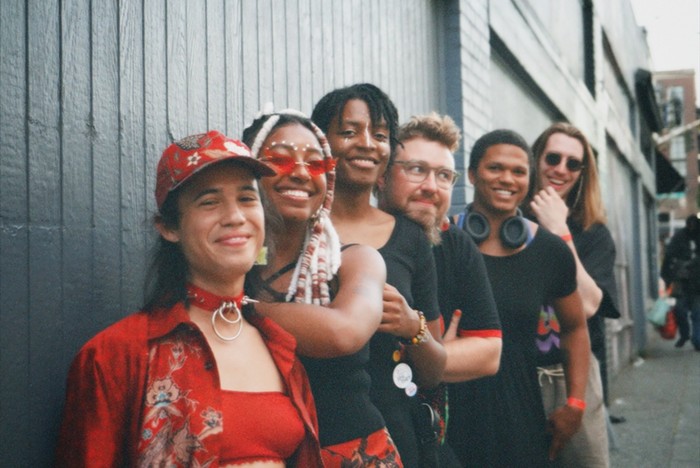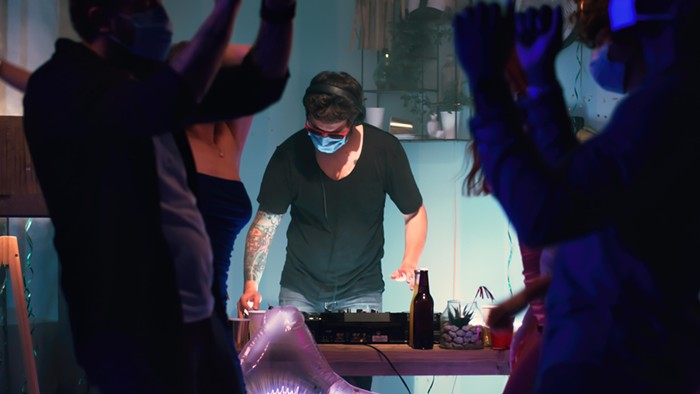
On one rainy Saturday night, I found myself ringing the bell for the front door of the Jack Straw Cultural Center. A moment later, the door was answered by the local artist/visionary/conceptualist Natasha Marin. And only a moment after that, I was in a recording studio with other Black men and women in the cultural industry discussing different aspects of Blackness. All I recall is I opened up completely about what being Black means to me.
Contrary to what many of my readers might think, I rarely give much personal thought about the area of my life that's coded as Black. More important to me instead is exposing and de-coding the institutions in our society that generate cultural meanings and formal/informal rules from a binary system that consistently structures blackness to be the negative of whiteness.
The group, which sat at a wooden table, talked for what felt like hours. Nevertheless, each of us always had more to say than was said. One felt that the discussion only marked the beginning of something much larger. And this is indeed how I feel about the new online multimedia exhibit, "Sites of Power," where people can find a recording of that roundtable discussion.
Collaboratively conducted by Marin, "Sites of Power" is a small part of the Black Imagination galaxy, which itself is part of Marin's ever-expanding Black Joy universe.

Though virtual, "Sites of Power" is really close in feel and sensibility to "The States of Matter" exhibit, which, almost two years ago, transformed Core Gallery into a dark maze of sounds and stories. Both works explode fascism in its original sense—to tie together into a bundle. Whiteness might do this, but not the Blackness of the Black Imagination. With bundling (fascio), there is no need to explore. The answers are already given. With "States of Matter" and now "Sites of Power," answers are constantly created and their implications explored.
This is why "Sites of Power" is best experienced with as many of the videos and recordings opened at once on your computer. Go in and out of the pieces as if they were rooms or subsystems within in a larger system. The Black Imagination movement would identify these systems as rhythms: "We feel most powerful when we are aligned with rhythm—the rhythm of our internal desire, the rhythm of our heartbeat and breath, the rhythm of our community, the rhythm of rest, the rhythm of how we create, the rhythm of belly laughter, the rhythm of connection and cuddles, the rhythm of consistent hydration, and the rhythm of the dance that never leaves us."
But what impresses me most about "Sites of Power" is it attempts to capture something like a distributed Black intelligence, a way of thinking and feeling that, though coded by Blackness, is not held down by it. Blackness in the pieces/performances—including recordings by Marin, and videos the Afro-Puerto Rican filmmaker Jay O'Leary Woods directed from Edinburgh, Scotland—is more like anti-gravity. The dancers, musicians, poets, curators, concept-builders, and cultural workers from Seattle and around the world are floating around each other in digital space like a cloud of gas swirling through deep space. No gravity. No fascio. No nothing that's holding us down or tying us up.



















